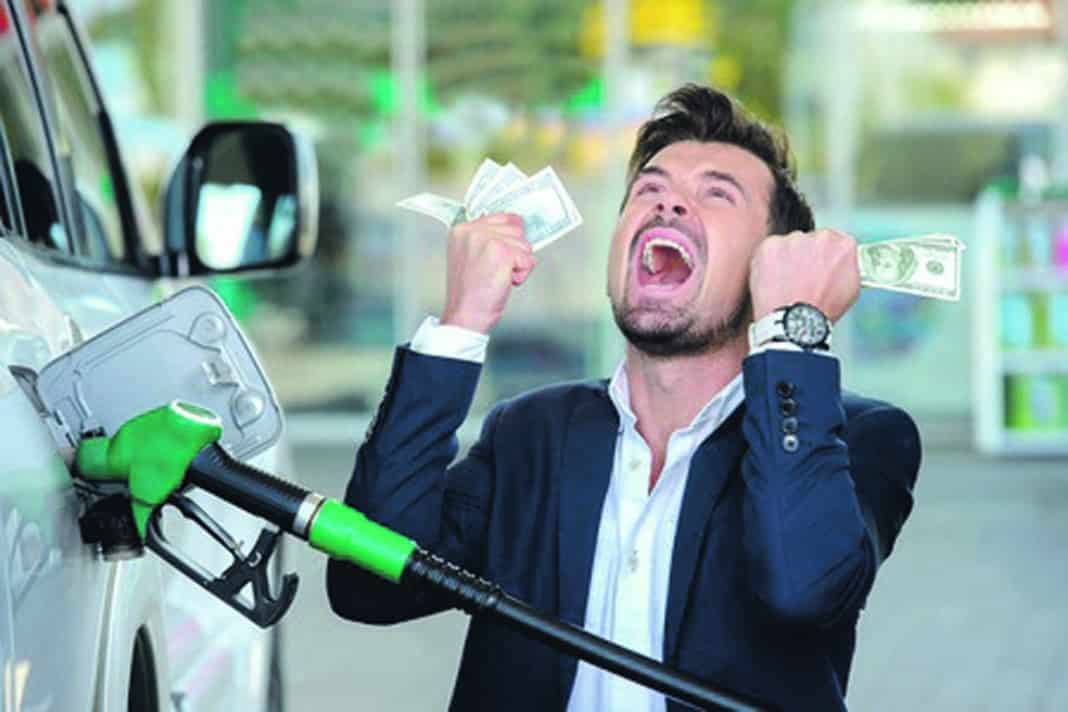Motor fuel could reach 3 euro per litre as the price increases currently being suffered are not going to end for some time. In fact, it’s going to get worse, as they increase to even more worrying levels.
This is something that was always expected considering the spring that we have already suffered in this respect. So much so, that this summer, experts say that record prices will be reached where levels of 3 euros per litre could even be exceeded.
This has been said at a press conference by Nacho Rabadán, general director of the Spanish Confederation of Service Station Entrepreneurs. This would be equivalent to spending a total of 150 euro to fill a 50-litre tank, that is, 50 euro more than what it costs to fill a tank in June 2022.
“Refineries have maximised their diesel production because demand far exceeds supply and their refining margin when processing diesel is also very high, but now summer is coming in the northern hemisphere and with it an increase in demand for petrol and there is simply not enough”.
According to the International Energy Agency, this growing escalation is very likely to continue steadily in the event that no unexpected changes occur, particularly with the situation in Ukraine.
“Price outcomes will largely depend on the degree to which existing sanctions imposed on Russia, any possible future sanctions and independent corporate actions, affect Russia’s oil production or the sale of Russia’s oil on the global market.”
Alto t be taken into effect is that, due to the pandemic, a large number of refineries were closed. This brought with it a series of consequences that could be seen due to the drop in world stocks of diesel and other distillates. There has not been such a drop since 2008.
That is why the European multinationals in this sector have made it known that Europe is in a crisis situation and there is the very real possibility of a shortage that could affect fuel. If that situation does arise, a state of fuel rationing would almost certainly be introduced.
To this situation must be added that of Algeria.
«The refining industry is intensive in the use of gas and with current gas prices, 60% of the operating costs of a refinery are go to pay the gas bill. So all the ingredients in the shaker are pointing to a result of a sky-high priced cocktail.”
A situation like this could end in the so-called destruction of demand. This refers to the fact that when the price of fuel rises to exorbitant levels, the interest in obtaining fuel gradually disappears. Such a situation can then contain prices to some extent.
For the moment it is not known if the supposed arrival of the three euro litre will appear, however, for the next month of July, it is estimated that the price will continue to rise by a small percentage of 0.35% for petrol and for diesel, 0.31%.
Fuel Discount
For more than two months, the rise in gasoline has affected drivers’ pockets on a daily basis and the questions are recurrent. When will the price of gasoline go down? Why does it continue to go up?
In recent weeks, gasoline and diesel have seen significant growth and have reached all- time highs. A rise that affects even more considering the cost of daily journeys and long car trips.
To alleviate the consequences of the energy crisis, on Friday, April 1, a reduction of 20 cents per litre was introduced by the Government. That day, the average price of 95 gasoline was 1,819 euros, compared to 1,854 euros for diesel A. Diesel has contained prices in recent days, but gasoline has almost eliminated the saving factor of the state subsidy.
Initially, the government measure was extended until June 30, but it has now been extended for up to three more months. The discount is applied at the time of payment, and that is why gas station panels reflect market prices.





